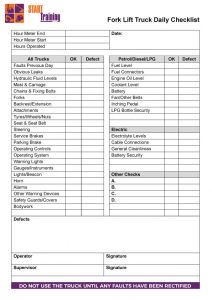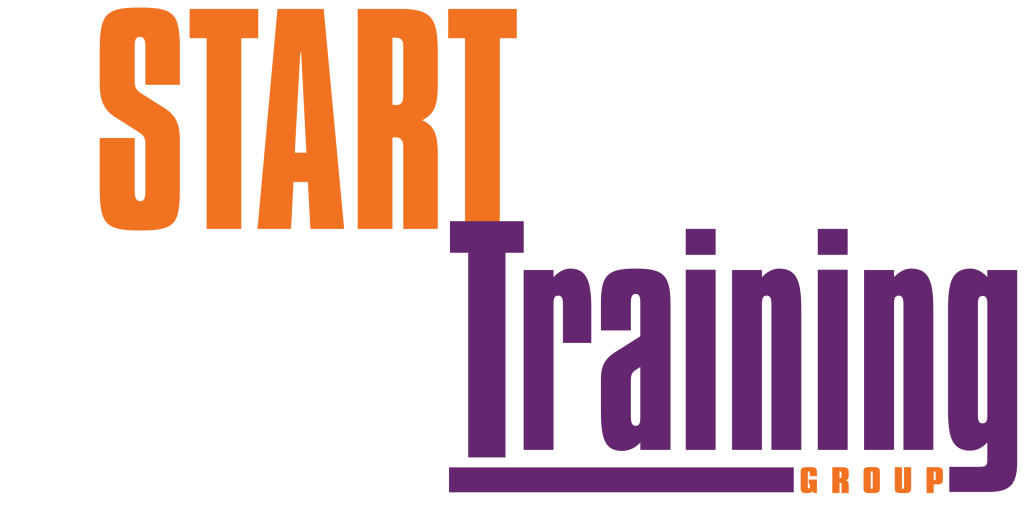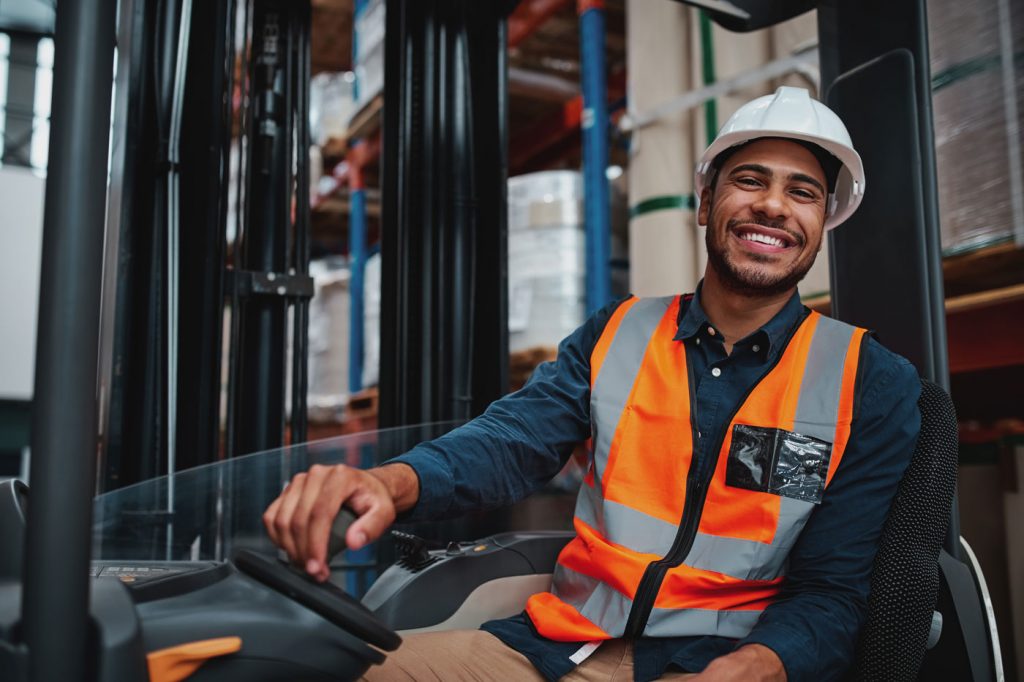Uncategorized
Top 5 Common Forklift Operator Mistakes
Common Forklift Operator Mistakes
Even the most experienced forklift operators make mistakes from forgetting regular maintenance to something more serious such as misjudging the weight of a load or taking a corner too fast. Common Forklift Operator Mistakes can be avoided by following a set of basic rules and using a bit of common sense. Read on to find out 5 common mistakes that forklift operators make and how to avoid making them yourself.
1. Lack of Inspection
Reducing the occurrence of Common Forklift Operator Mistakes begins before you even step foot onto the forklift. A thorough pre-operation inspection can detect faults and issues with the forklift before you turn the ignition and may prevent serious accidents before they happen. A pre-operation inspection should include:
- Hydraulic fluid
- Gas and fuel levels
- Battery
- Tyre pressure
- Signals
Failing to check hydraulic pressure is a common mistake that can have serious consequences. If hydraulic pressure is not maintained there is risk of the machines lifting capacity being reduced or comprised or even a failure to lift heavy goods. The result may be a dropped load which can result in serious damage to equipment or injury to nearby pedestrians
Before operation ensure there is enough gas to complete your task. Running out of gas mid task can again result in a serious incident including damage to equipment or your load or injury to pedestrians or nearby co-workers. Similarly, ensure the battery has a full charge prior to use, failure to do so may result in a loss of power during operation. The process of checking both battery and gas levels is quick and simple and should form part of your daily pre-start check.

Tyre pressure is vital to operating a forklift, or any vehicle, safely. Tyre pressure should be check on a regular basis and any issues detected should be repaired prior to operation. A flat or low pressure tyre can cause the forklift to corner differently than you are used to with potential to topple loads. A low pressure tyre is also at greater risk of bursting during use which can result in the a tipped forklift and serious injury. Tyres must be inflated to the correct pressure as per the manufacturers instruction. Over inflation can have equally serious consequences and under pressure.
2. Driving too Fast
One of the common forklift operator mistakes is driving too fast. Reckless driving is often done by newer and less experienced operators who aren’t fully accustomed to the ins and outs of driving a forklift. Rushing through a job by driving at higher speed can be extremely dangerous and result in tipped loads or impacts with pedestrians and co-workers.
It may be tempting to speed up in order to get the job done faster and on time but the risk is accident or injury is increased greatly. Safety should always be prioritized above speed and productivity. If you are felling stressed on under pressure to get a job done quickly then speak to your manager or colleagues and raise your concerns about safety.
3. Knowing Your Capacity
Operators should always be aware of the trucks capacity prior to lifting a load. Over loading a forklift is easy to do and can result in tipping and serious injury to the operator. Carrying a load that is too heavy is almost certain to make your forklift difficult or impossible to operate safely. Look for the data plate on the forklift which will tell you how much weight you can lift. Make sure you are aware of the units displayed whether they are in kilograms or pounds. The data plate should contain all the relevant information and should not be obscured, damaged or difficult to read. If it is, then report it to your manager and get a replacement fitted as soon as possible.
Capacity of a forklift doesn’t just relate to lifting weight. Ensure your forklift is suited to your environment whether it’s an indoor warehouse or outdoors. Choosing the correct tyre for you environment can be vital to operating your machine safety. Tyre types can include:
- Cushion Tyres: A press on rubber tyre made with a metal band. Suitable for smooth pavements and warehouses with concrete floors and where space may be an issue. Cushion tyres can have a smaller turning radius than other types.
- Solid / Puncture Resistant: One of the most common types in use today, they are similar to pneumatic but are not filled with air and do not provide any cushion and cannot be punctured. Excellent for indoor use and some limited outdoors but avoid rough or uneven surfaces.
- Pneumatic: Similar to truck and car tyres, a rubber tyre filled with air and with thick tread. Provides a cushioning effect for the forklift and operator and can extent running life of a truck. Can be used on uneven or rough ground.
- Polyurethane: Typically used for indoor forklifts and reach forklifts. Extended life span due to construction but have minimal traction. Suited for indoor use on flat and even surfaces.
- Non-marking: Specifically designed to not leave marks when turning or tracking a forklift. Typically required in businesses that handle food such as supermarkets and suppliers. They have a shorter life span than other tyres.
4. Miscommunication
Forklifts often operate in busy areas including storage yards, factories and warehouses. There are often other operators, pedestrians and co-workers within close vicinity of an operating forklift. One of the most common forklift accidents is a pedestrian being struck by a forklift. The best way to reduce and eliminate forklift-related accidents is good communication with those working around you at all times. Good communication is the key to reducing common forklift operator mistakes and is not just limited to verbal instruction but includes many elements such as:
- Pre-start toolbox, a discussion of work plan and hazard identification before the forklift is operated;
- Visual barriers and designated work zones to prevent unauthorized access to forklift operation areas;
- A clear and visible plan showing designated work zones and exclusion zones;
- Eye contact, making eye contact with the operator or pedestrians let them know you are aware of them and want to communicate with them;
- Use the available signals on the forklift including indicators, hazards lights and warning tones;
- Visual communication such as hand signals and warning signals;
- Verbal communication including the use of 2 way radios if necessary;
- Use a spotter in tight or busy spaces to watch your back and work with you.
If conditions change then stop work and re-assess your work area. Your work zone can change during the course of the day due to changing weather, pedestrian flow and other operations in your area. If you are not clear on your communication plan while operating a forklift, stop and re-assess.
Forklifts have lots of blind spots, so it is essential that the operator follows safety signs and checks the sound and light signals, including the reversing sounder, are all working properly before beginning any maneuver. You should also follow set forklift zones so people working nearby can anticipate your actions.
5. Trying to do it all alone
Forklift operations may look easy when done by an experienced operator. Don’t be afraid to ask for help if you are less experienced or unsure about a certain task. Teaming up with an experienced operator or signaler can make the task much easier and safer to complete and reduce the occurrence of common forklift operator Mistakes.
A designated signaler can direct you with hand signals and will let you know if you are approaching a hazard. They will act as an extra set of eyes and can position themselves so that they are able to cover your blind spots and reduce hazards. A trained signaler can also assist with directions and heights when loading and unloading. A signaler can be extremely useful and will increase your safety and the safety of those working within the vicinity of the forklift.
If you would like to continue learning and improving your forklift operating skills then consider one of Start Trainings Forklift courses which include beginners, experienced and refresher courses, find out more here.


